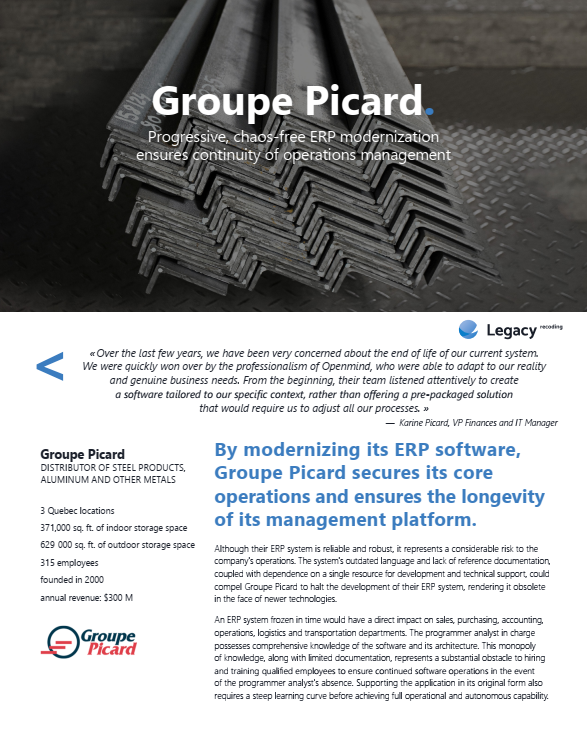
Cost of Custom Software Development: How to Allocate Your Budget & Measure ROI?
Learn how to allocate your budget wisely for custom software development, measure ROI effectively, and manage costs.

Legacy systems, once the pioneers of technology, can now become barriers to business growth and success. This outdated infrastructure and software can impede progress in a variety of ways, making it difficult for companies to meet modern demands and remain competitive in their industry.
In this article, we’ll explore eight key reasons why legacy systems & technologies can hold your business back. From incompatibility with modern technologies to high maintenance costs and security vulnerabilities, the challenges posed by legacy technologies and applications are considerable.
Metal distributor embraces software refactoring for enhanced efficiency and success. Explore their transformation journey.
Discover why legacy systems can be growth barriers.
Legacy systems often lack compatibility with newer software and applications. As businesses embrace digital transformation and innovative technologies, legacy systems may struggle to integrate seamlessly with these advancements. This compatibility gap can hinder workflow efficiency and limit the benefits gained from cutting-edge tools.
Maintaining and supporting legacy systems can be an expensive endeavor. The need for specialized expertise, obsolete hardware, and software updates for outdated platforms can drain valuable resources that could be better invested in strategic initiatives.
Older systems were not designed to withstand the sophisticated cyber threats prevalent in today’s digital landscape. Legacy systems may lack the robust security measures necessary to protect sensitive business data, leaving your company exposed to potential cyber-attacks and data breaches.
As your business grows, legacy systems may struggle to scale effectively to meet increasing demands. This limitation can lead to performance bottlenecks, decreased productivity, and customer dissatisfaction.

Rewriting your software guarantees greater mobility & enhanced security, while maintaining current functionality.
Outdated hardware and software can result in slower processing speeds and increased downtime. Employees may face productivity challenges when using legacy systems, impacting overall operational efficiency.
Regulations and compliance standards evolve over time, and legacy systems may not be equipped to meet the requirements of current laws. This exposes your business to potential legal risks and penalties.
Legacy systems can stifle innovation and hinder your ability to adapt to changing market trends and customer demands. The lack of flexibility and customization options may prevent your business from seizing new opportunities for growth.
Last, but not least, Legacy systems are often so specialized that only a limited number of employees possess the expertise to maintain and operate them effectively. Relying heavily on a single technical resource creates a single point of failure. If those individuals leave the company or become unavailable, it can lead to critical knowledge gaps and disruptions in the system’s functionality.
Today’s businesses operating across diverse industries need to recognize the challenges posed by legacy systems, technologies and applications. It is possible to retain your current system by rewriting it in a new technology stack.
Adopting application modernization solutions therefore becomes essential to overcoming these obstacles and positioning companies for growth, efficiency and competitive advantage in today’s rapidly changing business landscape.

